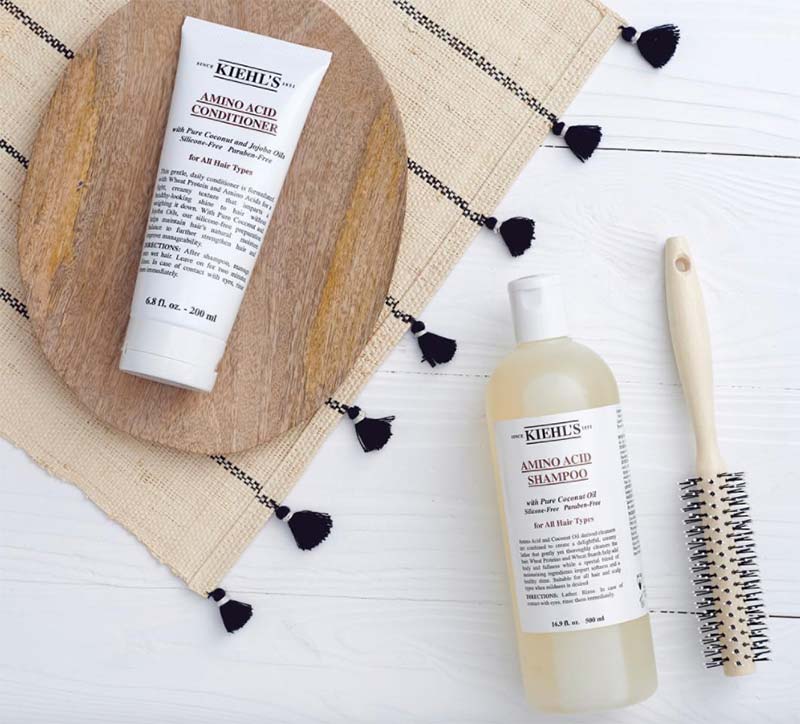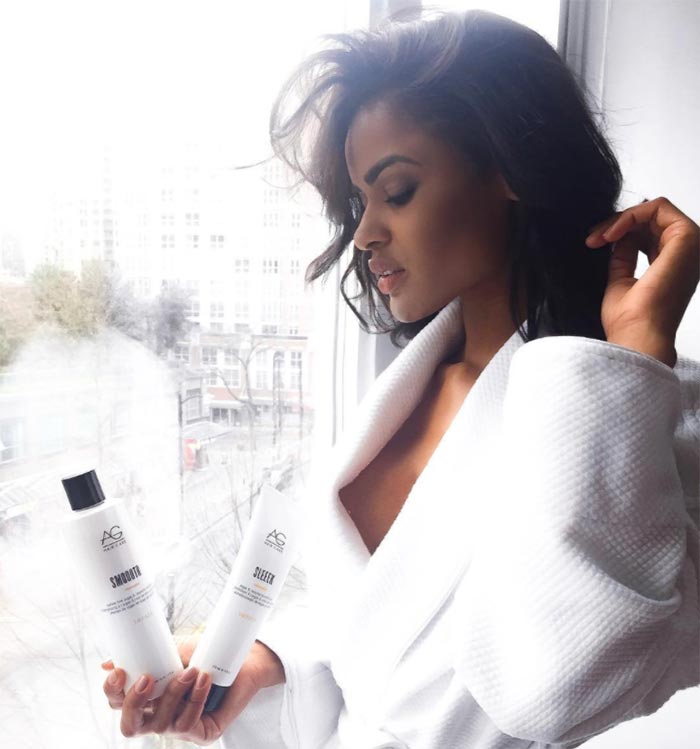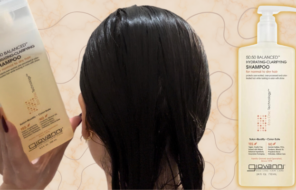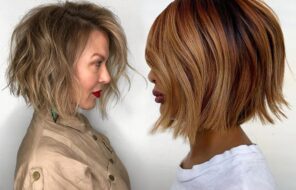Whenever people face different hair issues, my first instinct is to suggest moisturization, whether with hair conditioners, masks or hair oils. Protein hair treatments, however, also have their place in treating damaged hair. To find out if your hair needs a protein hair treatment, whether in the form of shampoo, conditioner, or dedicated cream, read on!
In this article, I explain what protein treatments for hair are, and what they’re made up of. I’ll help you figure out if your hair needs a protein hair treatment, and if so how often. If you’re the do-it-yourself type, there are two DIY protein treatment recipes you can try.
In this article:
- What Are Protein Hair Treatments?
- Signs That You Need a Protein Hair Treatment
- What Kind of Proteins Are Used in Protein Hair Treatments?
- Are There Any Drawbacks or Risks to Using Protein Hair Products?
- How Often Should I Use Protein Hair Treatments?
- Dos & Don’ts of Protein Hair Treatments
- DIY Protein Hair Treatments
What Are Protein Hair Treatments?
Protein hair treatments (although you can also get this magic in the form of a shampoo or conditioner) are hair products loaded with a kind of protein that the hair can absorb. They strengthen the hair, restore it if it’s been damaged, and fill in gaps between the cuticles thereby supporting the integrity of the hair shaft.
Proteins for hair slow water loss and can help keep the hair moisturized. Emollients will also help slow down water loss, so keep reading to figure out which type of ingredient would be better for you – the health of your hair depends on making the right choice!
So was it a protein treatment your hair needed all this time?
Signs That You Need a Protein Hair Treatment
- Dry hair on its own is not enough to justify a protein hair treatment because switching to a richer hair conditioner, or adding regular masking with emollients should always be the first step in treating dryness. If you try emollient-based treatments and they don’t work well enough on their own, then it is definitely time to give protein hair treatments a try.
- You should try protein hair treatments if your hair is more porous due to damage caused by bleaching, over-chlorination from the pool, or permanent chemical hair treatments like relaxing or perming. All of these circumstances can cause the hair to lose proteins. To figure out if your hair is porous, you can do a strand test. Place a strand of your hair in a shallow bowl of water. If the hair sinks immediately, then your hair is very porous.
- Protein hair treatments are, in general, more appropriate for those who do not have very thick hair strands (i.e. anyone referred to as having fine or medium hair) because it’ll add strength and rigidity.
- If you are just about to undergo a serious hair treatment like bleaching or perming, doing a protein hair treatment first is a good idea. It will help to mitigate some of the damage the dyeing or perming will cause.
- If you have noticed a lot of hair breakage, and conditioning treatments haven’t helped, then give a protein hair treatment a try.
- If your hair is very flat and has a difficult time achieving voluminous styles like curls or waves.
- If you are really unsure, you can give this strand test a try: wet a strand of hair with water, and then stretch it. If it stretches easily, but then breaks, it is a sign that your hair needs protein. If it doesn’t stretch much at all, your hair likely needs more moisturizing treatments.

What Kind of Proteins Are Used in Protein Hair Treatments?
The most frequent proteins you’ll see show up in protein hair treatments are keratin, collagen, oat, rice, wheat, and silk. They will normally be preceded by the word “hydrolyzed,” meaning that the protein has been broken down into a smaller molecule that is able to penetrate through the layers of keratin that make up the hair more easily.
The words “amino acid” and “protein” in the ingredients list are also a good sign for a protein hair treatment since hair proteins can come from so many different kinds of natural sources. Speaking of, you want to make sure these ingredients show up as one of the first 6 ingredients on the list to know that there is a significant amount of protein in the formula. You can check out our recommendations of the best protein treatments for hair on the market to try.
Are There Any Drawbacks or Risks to Using Protein Hair Products?
There is obviously a reason as to why I’m so cautious in urging my readers to try emollient hair treatments before the option for protein hair treatments. Using protein on hair that doesn’t need it, or simply using too much protein can cause the exact opposite of the effects you want.
The hair can become overly stiff, which can lead to it breaking more easily. It can also become sticky and easily tangled. While protein is supposed to fight dryness, too much protein can actually lead to the hair feeling dry!
On the other hand, protein hair treatments can cause seemingly opposite problems. They can cause the hair to become too soft, to the point that it looks limp, flat, and lifeless. It is difficult to predict who will have which results, but generally, it is best to avoid the risk of using too much hair protein.
How Often Should I Use Protein Hair Treatments to Avoid Bad Results?
The frequency with which you use hair proteins totally depends on your hair type. You can experiment by introducing hair proteins slowly into your routine, and slowly working your way up until you find the sweet spot.
On the lower end of the scale, you can introduce a product with a fairly low amount of protein (a hair conditioner or shampoo), and only use it once a month or so. This is a good choice if your hair is naturally a little coarser, or if your main concern is just a small amount of damage.
If you feel like your hair would benefit from more protein, you can work your way up to using a wash-off protein product as often as once or twice a week, or you can introduce a hair mask with protein on a regular basis.
If you’re starting off with a few factors that would make protein great for your hair (and your initial results with it are promising), like having hair that is both bleached and very fine, you don’t have to be as cautious, and you can immediately start using a lot of protein.
Dos & Don’ts of Protein Hair Treatments
- Do only use one type of protein hair treatments. You can opt for a protein-enriched shampoo, conditioner, hair mask, or leave-in cream.
- If your hair requires more protein, use the product of choice more often, rather than using more products with protein.
- Another way to increase the absorption of protein hair treatments is by applying heat to them. This can be done with a blowdryer, or by simply leaving the hair treatment in the hair during a hot shower.
- If, after using a protein hair treatment, your hair feels too stiff, you can follow it up with a moisturizing treatment. Simply soak your hair with coconut oil, or with a protein-free hair conditioner. Make sure your hair is completely saturated, and allow it to sit for a few minutes. Once you rinse it out, the stiffness should be gone.
- You can use a protein-enriched hair conditioner as though it were a mask, by leaving it in your hair for up to an hour before washing. This will give you nearly as strong of a result as using a protein hair mask!
So now that you know you need hair proteins…
DIY Protein Hair Treatments
While I usually urge people to be cautious with making their own beauty products, these recipes for a DIY protein hair treatment are one-use, so it is perfectly safe! Keep in mind that since the first recipe uses gelatin, it is not vegetarian. Your hair will absorb much more protein with it than with the second recipe which uses eggs, but being a vegetarian I would personally stay away from it.
Gelatin DIY Protein Hair Mask
This is by far the best way to get the effects of a protein hair treatment at home. However, be warned, plain gelatin is not the nicest smelling thing around. There is also coconut oil in this recipe as an emollient for extra moisturization.
Ingredients:
- 1 packet of gelatin (more for longer hair, less for shorter hair)
- ⅓ cup of water
- 2-3 drops of vinegar
- 1 tablespoon of coconut oil
Bring the water to a boil, and remove it from the heat. Dissolve the gelatin powder in the hot water by pouring it in slowly and stirring constantly – this will allow the gelatin to dissolve easily without any clumps.
Next stir into the mixture the vinegar and oil. Wait until the mixture cools down before you use it – you can leave it in the fridge for a couple of minutes to speed up the cooling process.
Once you’re ready to use it, prep your hair by getting it wet (you can even shampoo it first if you like). Squeeze out excess water from your hair, but let it remain damp.
Apply the gelatin mixture to your hair in sections, making sure to evenly coat every strand. Allow it to sit in your hair for anywhere between 3 minutes and one hour (the longer it sits in your hair, the more potent the treatment will be).
If you’re finding the mixture a little messy, you can wrap up your hair in a plastic bag to avoid a mess.
Rinse the mixture out of your hair – make sure it is thoroughly washed out, and then apply a generous amount of conditioner. Let the conditioner sit in your hair for a few minutes, and then rinse it away as well. Enjoy the feel of having soft and strong hair!

Vegetarian DIY Protein Hair Mask
This mask is great because in addition to the hair proteins from the egg it also includes deeply penetrative coconut oil to moisturize, and humectant honey which attracts water to the hair.
Ingredients:
- 1 egg
- 1 tablespoon of coconut oil
- 1 tablespoon of honey
Mix all of the ingredients in a bowl, and then apply to your hair in sections. It is best applied to damp hair.
Leave it on for about an hour or two, and then rinse off with cool water, and follow with shampoo and conditioner. Avoid rinsing with hot water, as it will cook the egg and make the whole concoction very difficult to remove.
Have you tried protein hair treatments? What was your experience? Let us know!
Photos via @nany





